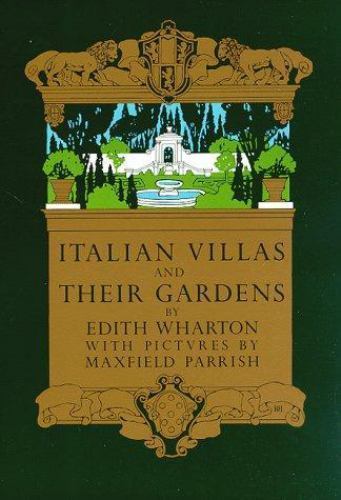Picture 1 of 10

Stock photo










Picture 1 of 10

Stock photo










Italian Villas and Their Gardens by Edith Warton (1976, Trade Paperback)

Alexandra's Book Emporium (702)
100% positive Feedback
Price:
US $12.00
Approximately£8.94
+ $30.80 postage
Returns:
30 days return. Buyer pays for return postage. If you use an eBay delivery label, it will be deducted from your refund amount.
Condition:
Oops! Looks like we're having trouble connecting to our server.
Refresh your browser window to try again.
About this product
Product Identifiers
PublisherHachette Books
ISBN-100306800489
ISBN-139780306800481
eBay Product ID (ePID)88870
Product Key Features
Book TitleItalian Villas and Their Gardens
Number of Pages256 Pages
LanguageEnglish
TopicLandscape, Buildings / Residential, General
Publication Year1976
IllustratorYes
GenreArt, Architecture
AuthorEdith Warton
FormatTrade Paperback
Dimensions
Item Height0.8 in
Item Weight0.4 Oz
Item Length10 in
Item Width7 in
Additional Product Features
Intended AudienceTrade
LCCN76-010865
Dewey Decimal728
SynopsisStruck by the magnificence of the Italian countryside from the time of her first sojourn there, our ranking novelist and lady of letters of the early 1900s--a renowned connoisseur--joined forces with the foremost illustrator of the time to celebrate a subject that was dear to them both: the incomparable villas and gardens of Italy. Edith Wharton draws on three centuries of knowledge written in four languages and covers some eighty villas and sixty garden architects. She describes the remarkable splendor of the villas for readers who have never seen them, and leads the reader through her discoveries of why the great houses and grounds create an effect of such profound calm and resolution.Their impact is not merely a matter of ancient statues or splashing fountains--impressive as these may be. Rather, the unique harmony stems from the spirit of the architects' and the designers' art: that delicate blending of man's work and the variations of nature to achievea sense of flawless concord. Her success in describing the Villa D'Este, the Villa Medici, and others, is enhanced and vivified by the breathtaking, full-color paintings of Maxfield Parrish.In his introductory essay, Henry Hope Reed, president of Classical America, places Italian Villas and Their Gardens in the context of American garden design at the turn of the century. Edith Wharton's thesis, that there is much value to be learned from the traditional Italian garden, helped to shape the American landscape of the era. In conveying the message, Maxfield Parrish proved a worthy acolyte. Thomas S. Hayes, who is president of the Edith Whatron Restoration, Inc., tells in his essay how the Italian model guided her in designing the garden of her famous country house, the Mount, at Lenox, Massachusetts., Struck by the magnificence of the Italian countryside from the time of her first sojourn there, our ranking novelist and lady of letters of the early 1900s--a renowned connoisseur--joined forces with the foremost illustrator of the time to celebrate a subject that was dear to them both: the incomparable villas and gardens of Italy. Edith Wharton draws on three centuries of knowledge written in four languages and covers some eighty villas and sixty garden architects. She describes the remarkable splendor of the villas for readers who have never seen them, and leads the reader through her discoveries of why the great houses and grounds create an effect of such profound calm and resolution.Their impact is not merely a matter of ancient statues or splashing fountains--impressive as these may be. Rather, the unique harmony stems from the spirit of the architects' and the designers' art: that delicate blending of man's work and the variations of nature to achieve a sense of flawless concord. Her success in describing the Villa D'Este, the Villa Medici, and others, is enhanced and vivified by the breathtaking, full-color paintings of Maxfield Parrish.In his introductory essay, Henry Hope Reed, president of Classical America, places Italian Villas and Their Gardens in the context of American garden design at the turn of the century. Edith Wharton's thesis, that there is much value to be learned from the traditional Italian garden, helped to shape the American landscape of the era. In conveying the message, Maxfield Parrish proved a worthy acolyte. Thomas S. Hayes, who is president of the Edith Whatron Restoration, Inc., tells in his essay how the Italian model guided her in designing the garden of her famous country house, the Mount, at Lenox, Massachusetts., Struck by the magnificence of the Italian countryside from the time of her first sojourn there, our ranking novelist and lady of letters of the early 1900s--a renowned connoisseur--joined forces with th
LC Classification NumberNA7594.W46 1988
All listings for this product
Be the first to write a review

























